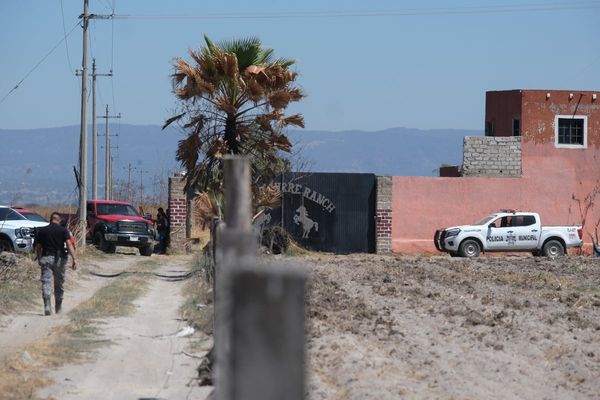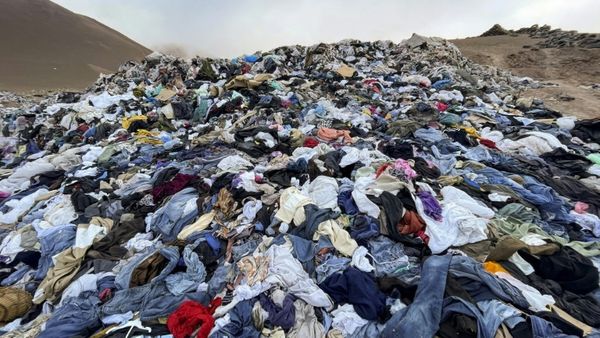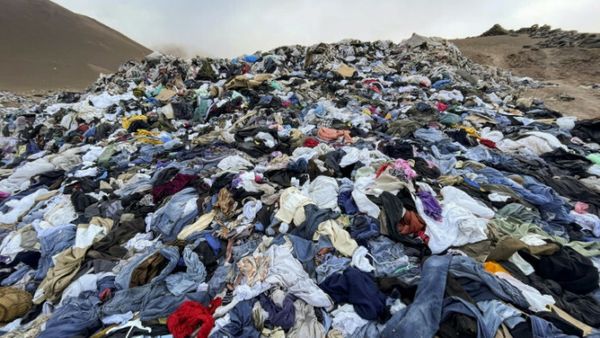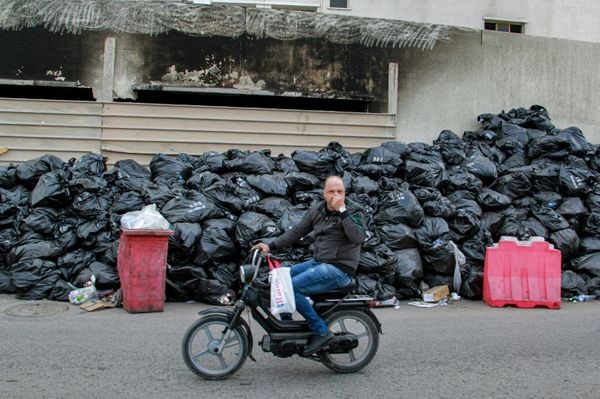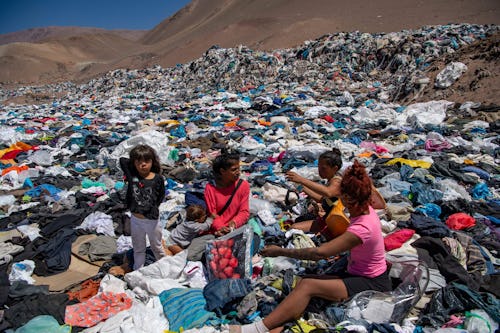
We all know by now that fast fashion is a raging enemy of the environment. It never looks like “the real thing” because it’s made quickly by grossly underpaid workers using chintzy materials, some of which are bad for our bodies. The supposed thrift of cheap clothes comes with an exorbitant cost to the planet that, unfortunately, only starts with carbon emissions. Most of us tuck these facts into the back of our brains behind our gluttonous obsession with amassing trendy trinkets, but it’s hard to ignore the actual mountain made of fast fashion trash that is forming in the Chilean Desert.
Chile, I’m learning, is something of a hub for unsold and used clothing. Clothes are made on the cheap in places like Bangladesh and China, passed through Europe and the U.S., and then end up in Chile. About 59,000 tons come into Iquique port in the Alto Hospicio free zone in northern Chile, Barron’s reported. Some of these clothes are sold in Chile, and some are exported throughout Latin America, but most of them end up piling up in the Chilean desert 1,100 miles from Santiago.
Get ready for this, because it is legitimately crazy: About 39,000 tons of fast fashion end up in these piles in the Chilean desert every year. For context, that’s 78 million pounds of shitty Marc Jacobs knock offs and heart sunglasses. Sure, not all of it goes to waste — some of the people who live near the dumps pick through the clothes to see what they can use or sell. But the rest just sits there, growing ever higher each year, accessorizing the otherwise beautiful landscape with consumerist detritus.
Chile isn’t the only place where fast fashion goes to die. Textile waste is a problem in many places, including China, India, and Cambodia. The reason this particularly gross mountain of capitalist waste is forming in Chile right now is obviously complicated, but the main reason seems to be that this particular dumping area — which is populated by some of the poorest people in Chile — is a “free zone,” which means that it is considered to be outside of Chilean territory and therefore the “merchandise” that arrives here doesn’t get taxed.
"This clothing arrives from all over the world," Alex Carreno, a former employee in the port's import area, told AFP, a Chilean news outlet. “What is not sold to Santiago nor sent to other countries stays in the free zone,” Carreno explained.
The other thing is that the trash is so toxic that other landfills — not in the free zone — won’t take it. "The problem is that the clothing is not biodegradable and has chemical products, so it is not accepted in the municipal landfills," Franklin Zepeda, the founder of EcoFibra, a company that makes insulation panels using discarded clothing, told AFP. That means that while these particularly ugly mountains are forming in Chile, the effects, inevitably, will not stay in Chile. Maybe think twice before your next fast fashion frenzy. It may feel like instant gratification, but the effects could be long-lasting.

